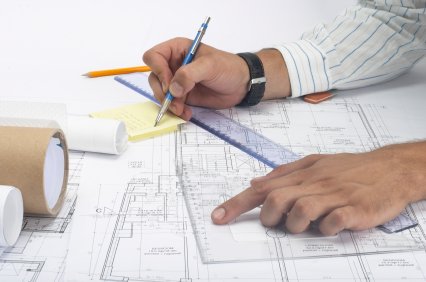Recognizing the Diverse Job Paths Available for Aspiring Architect
As an aspiring Architect, you have a world of career courses waiting for you. Whether you're attracted to typical style or the subtleties of lasting design, there's a specific niche that lines up with your rate of interests.
Traditional Design: Designing Structures and structures
Traditional architecture focuses on creating buildings and structures that mix performance with aesthetic charm. As you discover this field, you'll value the complex equilibrium in between form and objective. You'll find out to attract inspiration from historical styles, incorporating components like balance, materials, and craftsmanship. Your designs can mirror cultural heritage, showcasing neighborhood practices while fulfilling modern requirements.
You'll create skills in drafting, model-making, and site evaluation, allowing you to imagine and interact your concepts successfully. Engaging with clients, you'll need to understand their vision and translate it into feasible styles.
Moreover, developing codes and sustainability practices are crucial in your work, guaranteeing your frameworks are secure and eco pleasant. As you grow in your job, you'll locate chances in domestic, industrial, and even restoration jobs, each offering unique obstacles. Embracing traditional architecture leads the method for a fulfilling job that admires the past while forming the future.
Urban Planning: Forming Areas and Public Spaces
As an aspiring Architect, you can play a necessary duty as an urban organizer, transforming how neighborhoods operate and interact. By employing community engagement strategies, you'll assure that citizens have a voice in shaping their atmosphere. And also, incorporating sustainable design concepts will certainly assist develop spaces that not only satisfy today's demands but also secure the future.
Duty of Urban Planners
While several might believe of architects as the single dreamers behind buildings, metropolitan coordinators play a vital function in shaping the broader landscape of neighborhoods and public spaces. By working together with various stakeholders, you'll help design parks, transport systems, and domestic areas that advertise social interaction and ease of access. Your proficiency in spatial design and neighborhood characteristics enables you to visualize future development while preserving cultural heritage.
Community Involvement Approaches
Reliable community involvement approaches are essential for urban planners to ensure that the voices of citizens are listened to and valued in the preparation process. To foster significant dialogue, you should prioritize open discussion forums and workshops where neighborhood members can share their concepts and problems. By proactively paying attention and including feedback, you'll develop spaces that show the neighborhood's demands, eventually leading to even more sustainable and successful city environments.
Lasting Design Principles
When developing urban rooms, including sustainable layout principles is critical for developing settings that flourish both environmentally and socially. You should start by concentrating on energy performance, making use of materials that minimize waste and advertise recycling. Think about incorporating environment-friendly spaces, like parks and yards, to improve biodiversity and improve air high quality. Advertising walkability and public transportation can lessen dependence on cars, promoting a healthier neighborhood.
Designing with water conservation in mind is likewise key-- think about rainfall gardens and permeable surfaces to handle stormwater. Involving neighborhood members throughout the planning process warranties that the areas you produce fulfill their needs and encourage social communication. By accepting these concepts, you'll add to dynamic, sustainable city landscapes that benefit everyone.

Landscape Design: Developing Lasting Exterior Settings
As you explore landscape architecture, you'll uncover crucial design concepts that develop attractive and practical exterior areas. Lasting practices play a crucial role in making sure these settings prosper while decreasing ecological influence. And also, you'll locate a variety of career opportunities that permit you to make a real distinction in exactly how individuals engage with nature.
Design Principles in Landscape
Understanding style concepts in landscape architecture is important for creating sustainable outside settings that integrate with nature. You'll require to contemplate components like balance, range, and proportion to assure your designs really feel cohesive and inviting. Incorporating native plants not only improves biodiversity but also decreases water use, making your landscape durable. Think of the flow of space and just how individuals communicate with it; paths and seating areas ought to welcome expedition and relaxation. Furthermore, pay focus to seasonal changes, making with materials that match the surroundings year-round (Architect). By focusing on sustainability and visual appeals, you can produce outdoor areas that enrich the neighborhood and advertise well-being. Accepting these concepts will set a strong foundation for your occupation in landscape architecture.
Sustainable Practices Introduction
Lasting practices in landscape architecture not only concentrate on appearances yet also focus on ecological health and source preservation. You can develop spaces that promote dirt health and wellness, such as making use of natural products and exercising permaculture principles. Eventually, these practices guarantee your styles profit both individuals and the environment for years to come.
Job Opportunities Expedition
With a solid structure in sustainable practices, landscape style uses a selection of career paths that allow you to make a meaningful influence on the environment. You can work as a landscape designer, producing visually pleasing and practical outdoor rooms, or focus on environmental remediation, aiding to restore broken communities. Urban coordinators commonly collaborate with landscape architects to produce green rooms in city settings, boosting city livability. If you're enthusiastic about education, take into consideration coming to be a landscape architecture instructor, motivating future generations. In addition, you could deal with nonprofits focused on ecological sustainability or participate in research to introduce new practices. Each path not just forms attractive atmospheres however additionally promotes a healthier world for future generations.
Lasting Design: Concentrating On Eco-Friendly Practices
As you explore your profession in style, embracing environmentally friendly practices can set you apart in a competitive area. Lasting style concentrates on producing buildings that reduce environmental influence while boosting passenger wellness. By including sustainable materials, energy-efficient systems, and sustainable building strategies, you'll add to a greener future.
Start by getting expertise of green qualifications like LEED or BREEAM, which can strengthen your credentials. Think about how natural light, ventilation, and thermal efficiency can optimize design. Work together with engineers and environmental specialists to innovate services that decrease waste and preserve sources.
Do not neglect the significance of neighborhood participation-- engaging regional stakeholders can inspire designs that balance with the atmosphere. As clients progressively prioritize sustainability, your proficiency in environment-friendly techniques will not only attract tasks yet also accomplish your enthusiasm for accountable style. Welcome this important element of the occupation, and enjoy your occupation thrive.
Historical Preservation: Protecting and Restoring Social Heritage
While you start on your building trip, consider the necessary duty of historical conservation in keeping our cultural heritage. This field concentrates on the defense and restoration of significant structures, websites, and structures that tell the tales of our past. By participating in historical preservation, you'll help secure the building legacy that shapes community identification.
As a historic conservation Architect, you'll examine historical importance and analyze the condition of structures. You'll function carefully with historians and conservationists to guarantee authentic repair methods try here are used. This career path permits you to blend creativity with research, allowing you to design services that appreciate initial products and workmanship.
Your job not just contributes to sustainability by reusing existing structures but additionally fosters a sense of pride within areas. Welcoming this course will certainly assist you become a guardian of background, protecting the tales and looks that enrich our lives.
Inside Architecture: Enhancing Indoor Spaces
Historical preservation and interior design both share a dedication to improving the built setting, but they concentrate on various elements. While historical conservation emphasizes maintaining a structure's historic and social value, indoor architecture zeroes in on enhancing indoor rooms for capability and looks.
As a hopeful Architect, you'll discover that interior design permits you to mix creativity with technological abilities. You'll create rooms that not only look great however likewise advertise convenience and efficiency. This field entails understanding how light, shade, and materials interact within an area, influencing mood and usability.
You'll deal with different projects, from domestic homes to commercial workplaces, making certain that each setting fulfills the demands of its passengers. By prioritizing individual experience, you can transform insides right into functional and motivating areas, making a considerable influence on how individuals communicate with their environments. Accept the possibility to boost interior settings and form the way people live and function.
Industrial Style: Merging Functionality With Aesthetic Appeals
Commercial design plays a vital role in developing items that flawlessly blend aesthetic appeals with functionality, guaranteeing that what you use daily is not only aesthetically enticing however additionally sensible. As an aspiring Architect, you could involve yourself in this field, focusing on making everything from furnishings to customer electronic devices. Your work involves understanding customer requirements, materials, and making procedures, permitting you click here for more to create innovative options that enhance day-to-day experiences.
In industrial style, you'll frequently team up with suppliers, designers, and online marketers, ensuring that your designs are not just stunning but likewise practical. This profession course offers a dynamic environment where creativity fulfills usefulness, making it a gratifying choice for engineers interested in forming the products of tomorrow.
Frequently Asked Concerns
What Educational Credentials Do I Required to End Up Being a Designer?
To come to be a designer, you'll require a specialist degree in architecture, commonly a Bachelor's or Master's. Furthermore, you'll need to complete a teaching fellowship and pass the Architect Enrollment Assessment to practice legitimately.
Exist Certification Needs for Different Architectural Occupation Paths?
Yes, there're qualification demands for various architectural paths. Architect. You'll require to pass examinations, total teaching fellowships, and often pursue specialized training, relying on your selected focus, like landscape style, city design, or historical preservation
What Software Program Skills Are Necessary for Architects Today?

Just How Can I Gain Practical Experience While Researching Architecture?
You can acquire useful experience by interning at building firms, taking part in design competitors, offering for community projects, or collaborating with schoolmates on real-world tasks. These opportunities improve your abilities and develop valuable connections in the market.
What Task Opportunities Exist Outside Traditional Design Firms?
You can explore various task possibilities outside standard style companies, like urban planning, indoor style, landscape architecture, construction monitoring, property advancement, and even duties in sustainability consulting. Each deals special difficulties and incentives.
Whether you're official site attracted to traditional style or the nuances of lasting layout, there's a particular niche that straightens with your interests.When developing city areas, incorporating lasting layout concepts is essential for producing environments that prosper both environmentally and socially.As you explore landscape style, you'll discover vital layout principles that create attractive and useful outside rooms.Recognizing style principles in landscape style is necessary for developing lasting outdoor settings that harmonize with nature.In commercial layout, you'll usually work together with engineers, marketing professionals, and suppliers, ensuring that your styles are not only lovely however additionally practical.